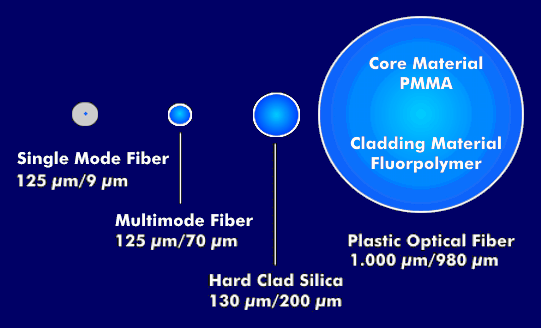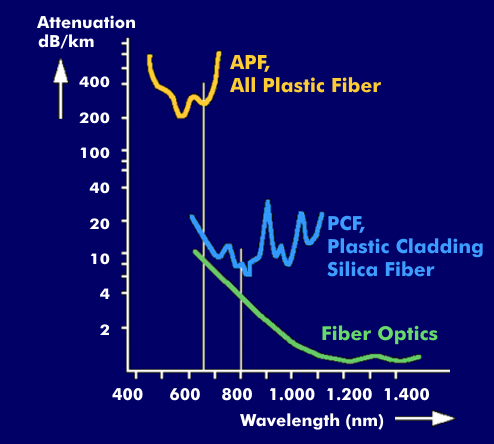all plastic fiber (fiber optics) (APF)
All Plastic Fiber (APF) is a plastic fiber in which both the center where the light is transmitted and the cladding are made of a polymer. Since the light transmission takes place in a polymer, polymer fibers have a much higher attenuation than glass fibers.
Due to the high attenuation, plastic fibers are only suitable for short distances, mainly in the terminal equipment sector. At 250 µm to 1,000 µm, the core of plastic optical fibers is considerably thicker than that of glass fibers. Optical fibers in which both the central light transmission and the cladding are made of plastic are polymer fibers made of All Plastic Fiber (APF). There are also hybrid optical fibers, in which the core glass is made of quartz glass and the cladding for light reflection is made of plastic. The PCF fiber (Plastic Clad Fiber) is one such fiber.
Plastic fibers have the disadvantage of extremely high light attenuation compared to glass optical fibers. They have pronounced attenuation minima at 660 nm and 780 nm. At 660 nm, the attenuation is still about 140 dB/km, at 780 nm it is over 300 dB/km .
This limits the use of plastic optical fibers to short distances. Optical fibers constructed as step fibers are operated at wavelengths of 660 nm.


